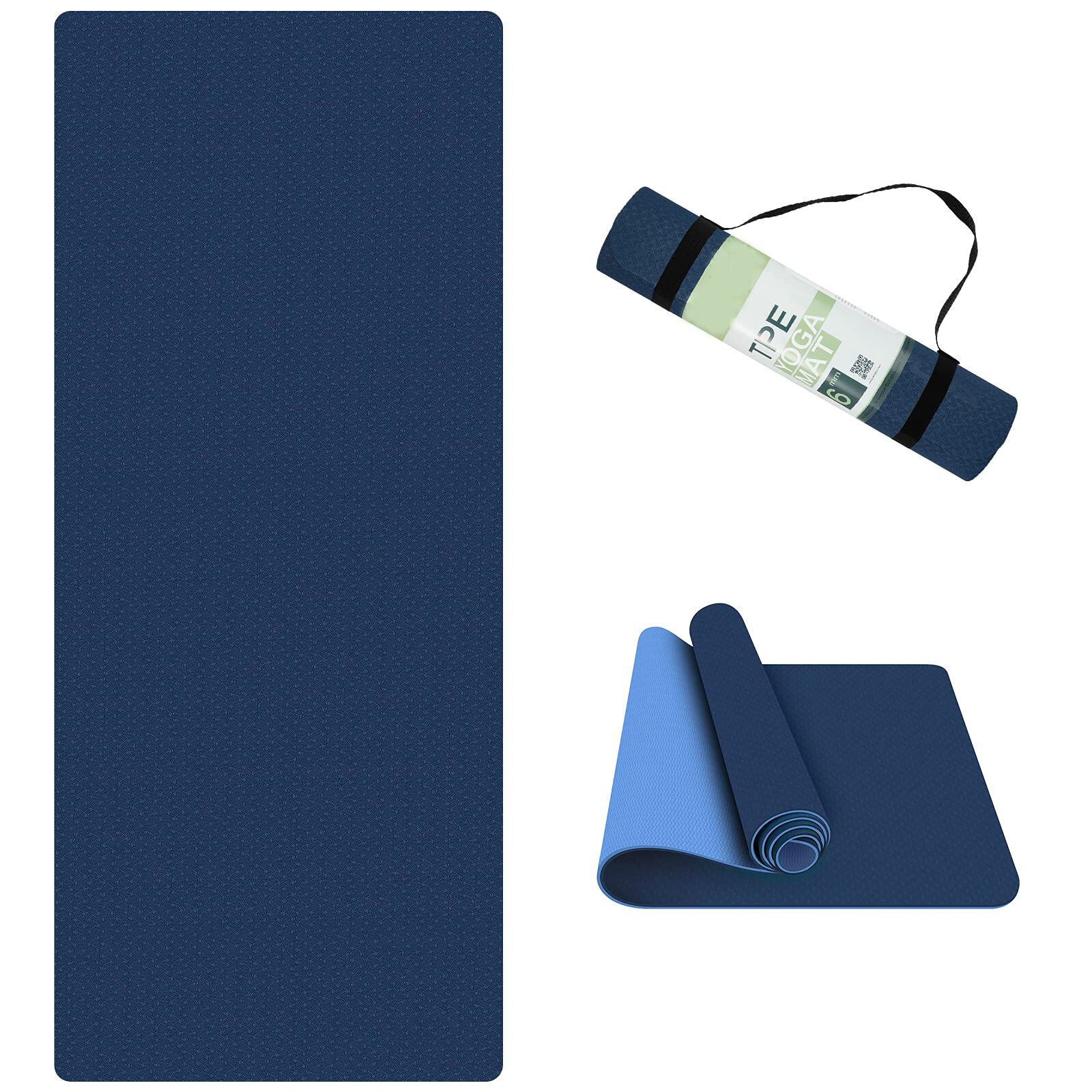Introduction
Have you ever went to a gym or yoga class? If you have, there will be some people who are using yoga mats and at the same time others may use exercise mat. Read on for the breakdown of these two types of mats so you can learn more. I have noticed that people spend, even more time searching for their mats and welcome you this text to understand better which kind of mat is best designed for your practice.

Which one is right for you?
Thickness — This is one of the biggest differences between most yoga mats and exercise mats. Best Hot Yoga Mat tend to be thinner than exercise pads, thicker and more cushioned. It is also widely used in yoga exercises that require balance and made from high-quality foam for sit-ups or push-up because posses a thick design gives adequate support when you are engaging your body against the aerial landings. Thicker mats can provide more padding for your body with jumping or high-impact movements resonating through the floor.
Yoga Mats Are Designed To Keep Balance The same applies to the people who sweat more and these are also an essential hold. They are almost tacky to help you grip better and maintain your poses, so focus on the move rather than not falling over.
Alternatively, exercise mats can be put into practice with a spectrum of activities other than yoga. They are high-quality for Pilates, stretching or other floor workouts. They have more padding and are thicker than mats, which makes them ideal for exercises that involve a lot of movement or jumping.
What They Are Made of
Yoga mats by FDM and exercise mats are available in a variety of materials that can make the difference, just like there is a significant observation between polyester or organic cotton clothing. PVC, rubber and cotton/jute are the most common materials for these mats. Best Non Slip Yoga Mat are often made from PVC because it is cushioned, has a non-slip grip and resilient. Similarly rubber mats are another commonly preferred option since they have environmental benefit and anti-slip nature.
There is an even wider range of materials for exercise mats. These include foam exercise mats, vinyl floor pads or even gym carpet. you get these kinds of mats in thick or skinny variety according to your demands. If you like falling on something soft while working out, a thicker mat would work for that.
Yoga mats are typically textured on one side or smooth to provide a non-slip surface. That being said, this is particularly important as you are trying to hold a pose for an extended amount of time. What this means for you are that an exercise mat, on the other hand may be less rigid and have more padding which can give additional relaxation throughout different movements.
Finding the right mat for you
When you are selecting a mat, think about the kind of exercise or yoga practice that you will be doing. If you intend to do yoga poses that need plenty of balance, a thinner yoga mat is an amazing bet because it offers greater stability. But if you are doing something more strenuous like jumping jacks or lunges (more on exercise mat thickness below), then a thicker weight loss and fitness floor pad is probably warranted to ensure that you feel good in your jump from 35000 feet.
Another aspect to think about is the material of the mat. For eco-conscious users, a Best Quality Yoga Mat made of natural materials such as rubber or jute is better for the planet. Another reason they are often used is due to it's high strength and durability fact, PVC mats. Foam or vinyl Exercise Mats are another option because foam is much softer, and it provides more cushioning especially during high impact workouts.
Last but not least it comes down to how the mat feels. A flat smooth yoga mat is essential for balance, while a cushy exercise mat suits workouts in which you will be jumping or moving frequently. If you find a comfortable matt and nice to your body it will make your practice much pleasant.
Yoga Mat VS Exercise Mats
At first glance, yoga mats and exercise mats seem to be the same thing but these two groundbreaking inventions have some key differences. Yoga mats are thin and therefore provide more grip for the balance need in different yoga postures. Workout mats, by comparison-depending on the style can range up to an inch in thickness and are more cushioned for high-impact activities.
One stands in their versatility. Use yoga mats: Yoga mat is specifically equipment designed for practicing yoga poses, which meets the needs of a person practice. Exercise mats, on the other hand are perfect for a number of workouts from yoga or Pilates to stretching and general floor exercises. This flexibility allow most exercise mats to accommodate for all type of workouts.
Understanding How Mats Work
A mat is predominantly used to give you a stable and supported area for exercise or yoga practice. It should be strong enough to make you feel comfortable exercising and moving around in it. Having the right mat can significantly improve your practice.
The mat aids in prop doing help you uphold poise having suitable regeneration for an expanded period. They are thinner and more prone to slipping which makes you now think about your form and breath.
On the other hand, exercise mats are designed to support and provide cushioning for a range of different activities. They are thicker and more cushioned than yoga mats so that they can take the shock of your quick movements. This means that they are suitable for any exercise which needs extra cushioning as well as comfort.






